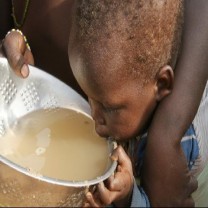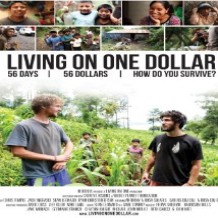Healthy Lifestyles in Underdeveloped Countries
November 15, 2015
Within our every day lives the thought of where our next meal is going to come from is not an issue that we have to worry about. In underdeveloped countries however, this is a factor that controls the lives of millions. Poor nutrition, lack of quality education, and severe poverty run the lives of these people. About 2.5 billion people live in underdeveloped countries. Africa and Asia have the most underdeveloped countries, with Latin America contributing as well. Out of the 10 most underdeveloped countries in the world, 8 of them come from Africa, with the remaining 2 from Asia. It is not a shocking fact that the people who are living in these countries do not live healthy lifestyles. This, however, can be a trend that can begin to change. With the right help from organizations and gaining proper education, underdeveloped countries can start to lead more healthy lifestyles.
Hunger
- 795 million people in the world do not have enough food to lead a healthy active life. That’s about one in nine people on earth. The vast majority of the world’s hungry people live in underdeveloped countries.
- Poor nutrition causes 45% of deaths in children under five. That’s about 3.1 million children each year.
- One out of six children (about 100 million) in developing countries is underweight. Within those developing countries one in three children are stunted.
- Under-nourishment is used to describe the status of people whose food intake does not include enough calories to meet minimum physiological needs for an active life.
- Malnutrition is characterized by inadequate intake of protein, energy and micronutrients and by frequent infections and diseases. Starved of the right nutrition, people will die from common infections like measles or diarrhea. Malnutrition is measured not by how much food is eaten but by physical measurements of the body – weight or height – and age. Characteristics include being dangerously thin, being too short for one’s age and being deficient in vitamins and minerals
- Wasting is an indicator of acute malnutrition that reflects a recent and severe process that has led to substantial weight loss. This is usually the result of starvation and/or disease.
Poverty
- Over 2.5 billion people live on less than $2 a day, with nearly three-quarters of the population of Sub-Saharan Africa falling into this category.
- About 1.1 billion people in developing countries have poor access to water.
- About 2.6 billion people in developing countries lack basic sanitation.
- There are about 9 billion children from the developing world. One in three have inadequate shelter, one in five have no access to safe water, and one in seven have no access to health services.
Education
- One in four young people in developing countries are unable to read a sentence
- 175 million young people lack even basic literacy skills.
- An estimated 250 million children are not learning basic reading and math skills, even though half of them have spent at least four years in school.
- 774 million illiterate adults
- There is an increase in teacher numbers because people are being hired without training.
What the Underdeveloped Population Wants
In a study conducted where civilians from 13 different underdeveloped countries were asked the question “What do you want to see change?”, these were the top results:
- Reducing poverty
- Reducing hunger
- Reducing the spread of HIV/AIDS
- Providing more jobs for the youth
- Reducing the death rate of children under five
- Reducing the number of women dying in childbirth
- Achieving primary education for all

What can be Done?
As an individual so far removed from these issues it is difficult to understand how you can help the problem. There are so many organizations trying to combat the issues at hand. Some of these organizations are truly making an impact, while others are sometimes causing even more harm. Many people believe that the issue of world hunger can be resolved if the rest of the world simply donates mass amounts of food to the countries that need it the most. These countries are not accustomed to this surplus of food, and therefore do not understand the proper way to cook and eat the food. This goes back to the lack of education within underdeveloped nations. Without education these problems will not get solved. Children need to be learning from qualified teachers and need to be learning about the importance of health from a young age. This way even if they do grow up in poverty, they know the importance of nutrition and have the knowledge of what foods they can grow for themselves. Physical activity is another aspect that often times gets overlooked. Physical activity is essential in living a healthy lifestyle which is a fact that many people do not understand. If children are learning methods of physical activity in school, and the positive affects it has on the body, they are giving themselves a better shot at living a healthy life.
Resources
- The William and Flora Hewlett Foundation
- Global Partnership for Education
References
- http://www.wfp.org/
- http://www.givewell.org/international/technical/additional/Standard-of-Living#Incomeandassets
- http://www.theguardian.com/global-development/2014/jan/29/illiteracy-education-young-people-developing-countries
- http://www.globalissues.org/article/26/poverty-facts-and-stats
Media References
- https://www.ted.com/talks/josette_sheeran_ending_hunger_now
- http://love2others.org/projects/water/
- http://indiatoday.intoday.in/story/delhi-children-malnourished-child-rights-and-you-breastfed-nutrition/1/352583.html
- http://www.imdb.com/title/tt2625598/
- http://factsanddetails.com/world/cat57/sub380/item2155.html




Leave a Reply